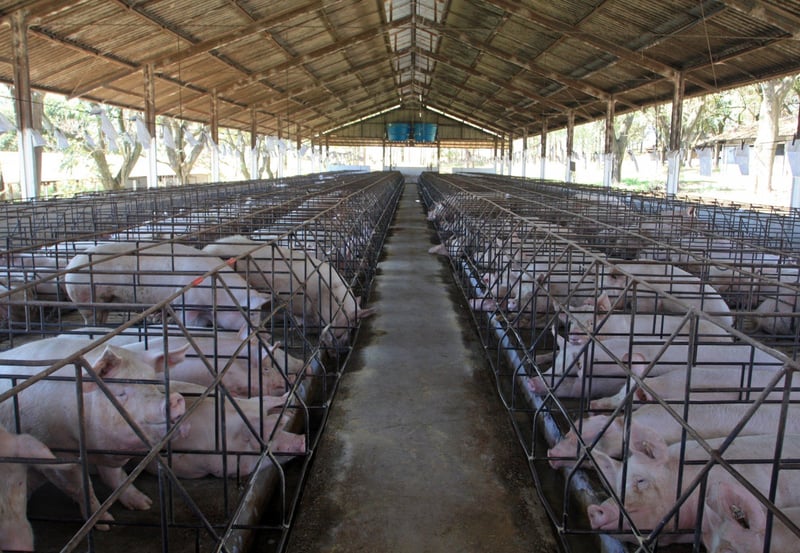
What is a gestation crate?
Blog
Confining pregnant pigs in gestation crates is cruelty. What exactly are gestation crates and why are they cruel?
The pork industry relies on millions of female pigs to continuously birth litters of piglets who are then raised for meat. Aiming to maximize profits and minimize costs, the industry has bred pigs to produce larger and larger litters and keeps pigs in a tightly managed cycle of pregnancy to produce as many litters per year as possible.
The intensification and maximization of the pork industry coincided with the mass adoption of crates for housing mother pigs during their pregnancies. Gestation crates were first promoted to the industry in 1969, but it wasn’t until the 1990s following rapid expansion and consolidation of the industry that they became the norm.
Gestation crates – also called “sow stalls” or “gestation stalls” – are constructed of metal bars and are often compared to the size of a standard refrigerator. The mother pig can stand and take a few steps forward or back, but they cannot turn around or lie down with her legs fully extended without touching the bars or the sow in the crate next to her.
Restricting mother pigs to crates allows producers to maximize the number of animals that can be housed in a single barn. It also allows for companies to only employ a few managers per operation as employees can easily walk through and assess individual animals. Automated feed and water systems dole out rations at the front of the crates, and slatted floors allow for manure to collect underneath to later be flushed out as a slurry into a storage pond called a “lagoon”.
Mother pigs will spend the majority of their reproductive lives in these crates. They are kept in the crates after being artificially impregnated until just a few days before their expected birthing date. (Fun fact: a pig’s gestation period is 114 days, roughly 16 weeks). Before giving birth, called “farrowing,” they are moved to a different crate that affords them slightly more space to lie down but still severely restricts their movement.
Crates prohibit farmed animals from engaging in their instincts to forage, root, nest, and socialize, causing extreme stress and frustration. They are also kept on a restricted diet. These aspects lead to behaviors like sham chewing, where they repetitively chew even though their mouths are empty causing severe tooth damage. In crates, pigs have higher levels of leg weakness and lameness due to constant inactivity. These often go undetected because they are held in place, leading to prolonged pain and unattended injury. Shoulder injuries and urinary and vaginal infections are also common.
The chronic stress of confinement reduces their immunity, predisposing mother pigs to disease. This is addressed by the continuous administration of antibiotics, contributing to the spread of resistant bacteria and increasing resistant infections in humans.
Gestation crates are perhaps the most salient example of how the industry views farmed animals as cogs in a machine. Mother pigs are not seen as sentient, caring, intelligent creatures deserving of comfort and safety. Rather, they are considered solely as units of production, responsible for birthing as many surviving piglets as possible.
Fortunately, alternative systems that ensure the welfare of sows and farmers are available and practical. Enriched group housing allows sows to satisfy their basic needs to move, socialize, and explore. Providing edible enrichments, in particular – like straw and other edible fibers – helps to reduce rates of repetitive abnormal behaviors, chronic hunger, body lesions, and lameness. These systems improve pig longevity, resilience to disease, overall health, and reproductive performance. They also, notably, reduce the risk of zoonotic disease and increase worker job satisfaction.
Companies around the world are phasing out crate-based systems and transitioning to enriched group housing. Join us in demanding companies take a stand for mother pigs.
Crates prohibit pigs from engaging in their instincts to forage, root, nest, and socialize, causing extreme stress and frustration.